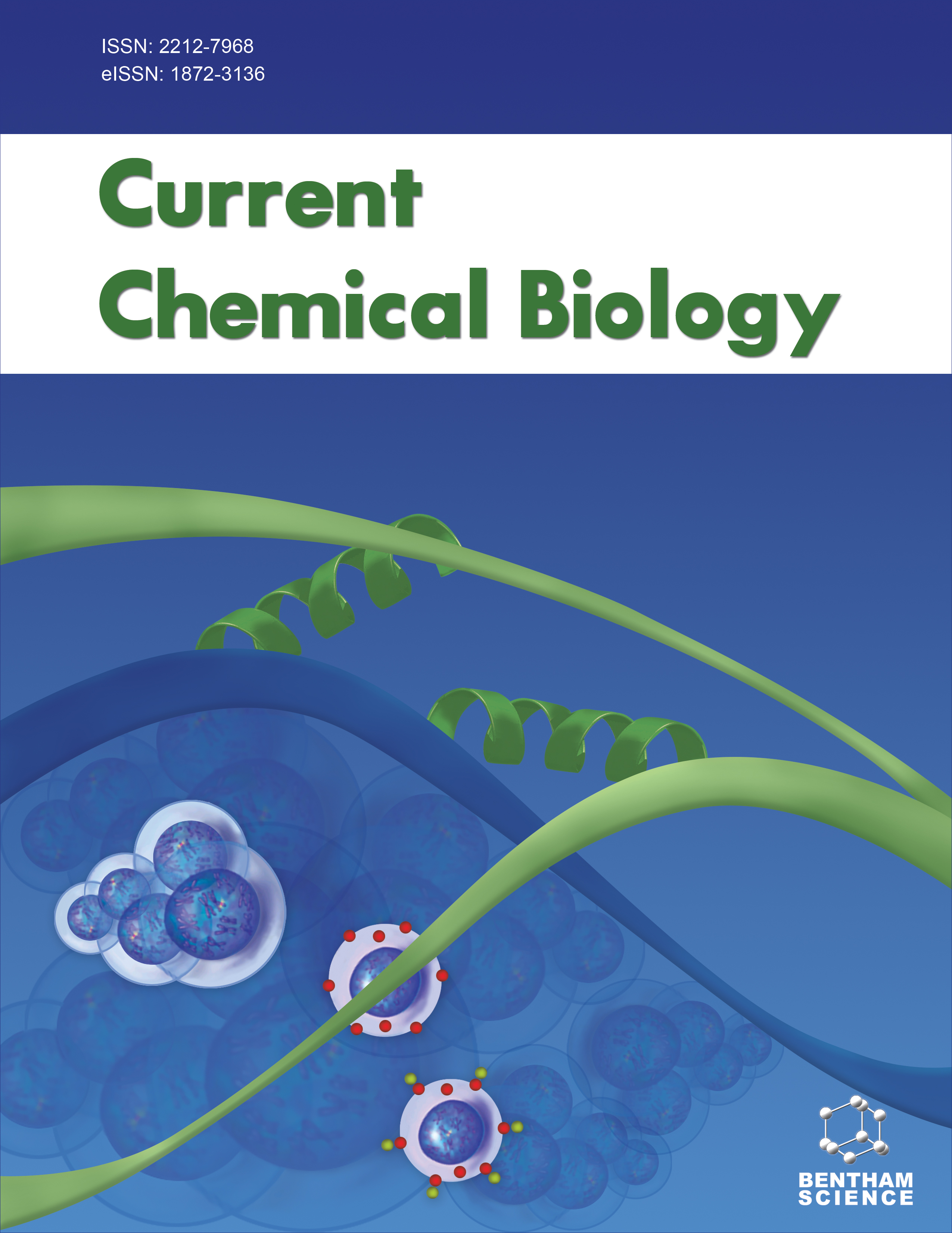- Home
- A-Z Publications
- Current Chemical Biology
- Previous Issues
- Volume 7, Issue 1, 2013
Current Chemical Biology - Volume 7, Issue 1, 2013
Volume 7, Issue 1, 2013
-
-
From Sulfur to Selenium. A New Research Arena in Chemical Biology and Biological Chemistry
More LessAuthors: Michio Iwaoka and Kenta AraiSince the finding that selenium is an essential micronutrient for our life as well as the discovery of selenocysteine (Sec) as the twenty-first proteinogenic amino acid that is expressed by using the information encoded in genes, research fields in chemical biology and biological chemistry have been expanding to a new paradigm where selenium plays important roles. A number of selenoenzymes, which utilize a selenium at Read More
-
-
-
Selenium Containing Compounds from Poison to Drug Candidates: A Review on the GPx-like Activity
More LessAuthors: Claudio Santi, Caterina Tidei, Claudia Scalera, Marta Piroddi and Francesco GalliOxidative stress results from the formation of reactive oxygen species (ROS) such as peroxides that cause damage to cell membranes and react with various biomolecules in mammalian cells. The selenoenzyme glutathione peroxidase (GPx) destroys peroxides by catalyzing their reduction to alcohols or water with the stoichiometric reductant glutathione. The effects of oxidative stress have been implicated in a variety of dege Read More
-
-
-
Current Developments on Synthesis, Redox Reactions and Biochemical Studies of Selenium Antioxidants
More LessAuthors: K. Indira Priyadarsini, Beena G. Singh and Amit KunwarIn the last one decade, researchers are exploring the possibility of developing less toxic selenium compounds as alternate class of antioxidants. Since most of the biological effects of selenium are mediated through selenoproteins such as glutathione peroxidase (GPx), new organoselenium compounds are being designed that could mimic the activity of GPx enzyme. One of the essential requirements for an antioxidant is its a Read More
-
-
-
Glutathione Peroxidase Activity of Ebselen and its Analogues: Some Insights into the Complex Chemical Mechanisms Underlying the Antioxidant Activity
More LessEbselen (2-phenyl-1,2-benzisoselenazol-3(2H)-one), a lipid-soluble organoselenium compound, exhibits numerous biological activities both in vitro and in vivo systems. This compound is undergoing clinical trials for a number of disease states such as stroke and hearing loss. It is known that ebselen exhibits glutathione peroxidase activity (GPx) and is a remarkable scavenger of reactive oxygen species (ROS) such as peroxynit Read More
-
-
-
Oxidation of Zinc-Sulfur Centers by Reducible Organoselenium Compounds: A Review and Bonding Perspective
More LessAuthors: Craig A. Bayse, Sean M. Whitty and Sonia AntonyOne potential mechanism for the effectiveness of organoselenium compounds against a number of cancer cell lines is the interaction of selenium with zinc signaling processes. Reducible selenium (rSe) compounds such as diselenides, selenenyl halides and seleninic acids release zinc from zinc fingers and metallothionein. Based upon a review of the literature, two key mechanisms are discussed: the stoichiometric displacement Read More
-
-
-
Selenoproteins and their Role in Oxidative Stress and Inflammation
More LessAuthors: Ujjawal H. Gandhi, Tejo P. Nagaraja and K. Sandeep PrabhuThe discovery of selenocysteine as the 21st amino acid has revolutionized the understanding of the significance of the essential micronutrient selenium in human and animal health. About 25 different selenoproteins have been identified that collectively function to detoxify reactive oxygen and nitrogen species (RONS) and thus aid in maintaining an optimal redox tone as a vital component of the antioxidant defense system Read More
-
-
-
Translating Enzymology into Metabolic Regulation: The Case of the 2- Oxoglutarate Dehydrogenase Multienzyme Complex
More LessAuthors: Victoria I. Bunik, Guenter Raddatz and Slawomir StrumiloEnzymes are catalysts designed to function in the metabolic networks of biological systems. This review shows mechanisms underlying chemical contribution to the biological system performance and adaptations in permanently changing environment. The catalyst is exemplified by the 2-oxoglutarate dehydrogenase complex irreversibly degrading a branch point metabolite 2-oxoglutarate at the crossroad of carbon, nitro Read More
-
Volumes & issues
Most Read This Month
Article
content/journals/ccb
Journal
10
5
false
en


